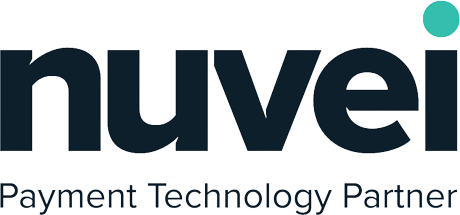DDOS Protection
Attackers Now Have SLAs.
Prepare for What They’ll Have Tomorrow.

Go Beyond Legacy Solutions
We at GlobalDots hunt for the most cutting edge and relevant technologies out there.
Once tested and found qualified we bring you the most certified innovative products out there for every pressing use case.

Your Benefits
We evaluate your business risk to recommend the most cost-effective mitigation model. To avoid failures, we consider each solution’s specifics (e.g scrubbing center map) against the details of your use case.

 Instant Support
Instant Support
You really don’t want to wait on vendor support at the moment of truth. Get on-demand DDoS drills and air-tight configurations for full independence & readiness.

Commoditized doesn’t mean stagnant. Like DDoS attacks, solutions keep evolving. Rest assured we’ll always deliver the latest one for you.

 Never Miss the True Attack
Never Miss the True Attack
DDoS is often a mere smoke screen for a more complex, invasive network or application attack. Leverage our diverse portfolio to bundle & integrate your hacker-proof security stack.

8 Best Practices for Making a DDoS Protection Plan
When a DDoS attack strikes, panic ensues. Having a DDoS mitigation plan in place will make the difference between hours or days of organization-wide chaos and an orderly and timely response that keeps business as usual. Follow these steps to develop a DDoS mitigation plan for your organization.

FAQs
-
What does DDoS mean in simple terms?
A Distributed Denial of Service (DDoS) attack is like a traffic jam on a website or online service. This type of attack involves a large number of compromised systems (often called a botnet) flooding a target (such as a server, network, or application) with so much traffic or resource requests that it overwhelms the system, causing legitimate users to be unable to access it.It’s called distributed because the traffic comes from multiple sources, making it harder to block by just filtering out one IP address or source. The results are service disruptions, downtime, and potentially serious financial and reputational impacts.
-
Is DDoS a vulnerability or a risk?
DDoS is considered a threat, which in turn contributes to the risk for an organization, rather than being a vulnerability itself. Indeed it’s classified as a threat because it represents an intentional attempt by a malicious actor to disrupt services by overwhelming a target with traffic. It doesn’t exploit a specific vulnerability but leverages the fact that every system has a limit on how much traffic it can handle.
-
What happens when you are DDoS?
The ultimate effect is service disruption — legitimate users cannot access resources, leading to downtime, loss of revenue, damage to reputation, and potentially even regulatory consequences if SLAs or compliance obligations are breached. In fact, what happens is:
- Resource Exhaustion: The incoming traffic overwhelms the network’s bandwidth capacity, causing severe slowdowns or complete loss of connectivity for legitimate users. The surge of requests exhausts server resources (CPU, RAM), leading to a degraded performance or causing the server to crash.
- Service Unavailability: Critical services (e.g., web applications, APIs, DNS servers) become unresponsive or extremely slow, making them unusable. The impact is for external customers but also for internal users relying on those services.
- Application level impacts: With sophisticated DDoS attacks, like HTTP Floods, attackers overwhelm specific endpoints, causing application threads to hang, or filling connection queues, which disrupts backend services. This type of attack is harder to detect since it mimics legitimate behavior.
During a DDoS, security teams need to immediately assess the situation, engage DDoS protection mechanisms (like WAF rules or cloud scrubbing), and coordinate with ISPs or third-party mitigation providers.
-
What is DDoS mitigation service?
A DDoS mitigation service is a security solution designed to detect, absorb, and neutralize those types of attacks before they can disrupt the targeted systems, applications, or networks. It acts as a defensive barrier, filtering out malicious traffic and allowing legitimate requests to reach the service. A typical DDoS mitigation service involves a combination of traffic filtering, rate-limiting, and intelligent routing using a series of techniques, technologies, and security rules. It essentially acts like a “cleaning station” that sifts through all incoming traffic, allowing genuine users in while blocking or redirecting malicious traffic. There are 3 major types of those services:
- Cloud-Based DDoS Mitigation: they are the most common type able to leverage the cloud features to handle traffic at the edge before it even reaches the client’s infrastructure. Cloud-based solutions can scale to handle terabit-level attacks, something a typical on-premises system could never achieve. These services have a global network presence with multiple points of failure, making it difficult for attackers to bypass them.
- On-Premises Hardware/Appliance-Based Mitigation: Hardware solutions are deployed within the organization’s network. They offer low latency but are limited by the organization’s own bandwidth and scale.
- Hybrid Solutions: Combining on-premises devices with cloud-based scrubbing for more flexibility and cost-efficiency. This is ideal for large enterprises with varying traffic patterns and a mix of on-premises and cloud-hosted infrastructure.
DDoS mitigation providers have real-time threat intelligence and specialized teams to counter emerging attack vectors, which can be challenging for internal teams to maintain.
-
How DDoS mitigation works?
A typical DDoS mitigation service involves a combination of traffic filtering, rate-limiting, and intelligent routing using a series of techniques, technologies, and security rules. It essentially acts like a “cleaning station” that sifts through all incoming traffic, allowing genuine users in while blocking or redirecting malicious traffic. An example of mitigation strategy could be:
- Traffic Diversion and Routing: IIncoming traffic is redirected to the mitigation provider’s infrastructure using DNS redirection, BGP announcements, or GRE tunneling. The provider’s network is built to handle high volumes of traffic and is distributed across multiple regions, making it difficult for attackers to saturate it.
- Traffic Analysis and Filtering: The service uses traffic profiling and behavioral analysis to distinguish between legitimate and malicious traffic patterns. It can apply heuristic models, rate-limiting, and anomaly detection to quickly spot attack patterns.
- Rate Limiting and Traffic Shaping: If legitimate traffic is mixed in with attack traffic the service can use rate limiting, CAPTCHA challenges, or some sort of JavaScript challenges to filter out bots and ensure only real human traffic is allowed.
- Traffic scrubbing: The core of the mitigation service is the scrubbing centers. These are distributed, high-capacity data centers that ingest and filter traffic, absorbing DDoS attacks by inspecting each packet to ensure it’s not part of an attack pattern.
- Reinjection of Clean Traffic: Once malicious traffic is scrubbed, clean traffic is routed back to the original destination, ensuring minimal disruption to the end-users.
For more sophisticated Layer 7 attacks (e.g., slow HTTP POSTs or API abuse), the service could leverage Web Application Firewalls (WAFs) and behavioral-based rules to stop attacks targeting specific application endpoints or URLs.















